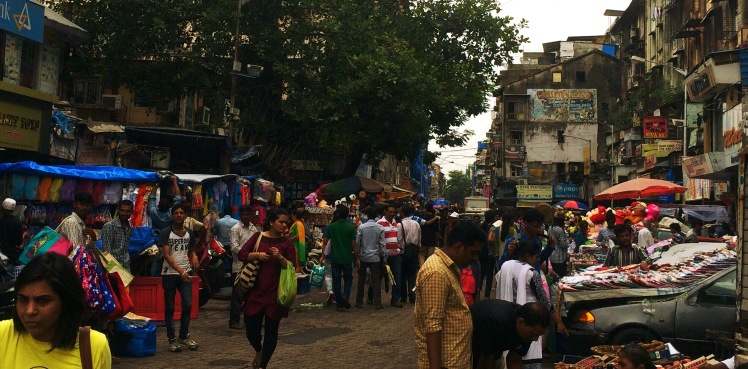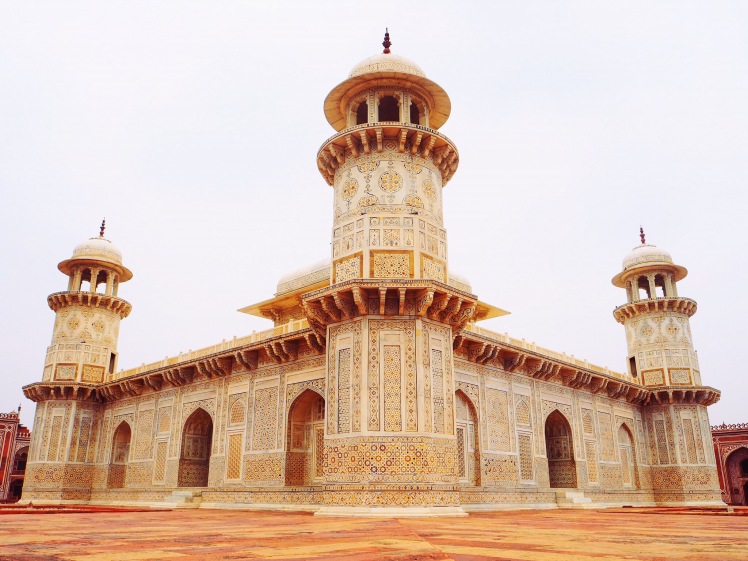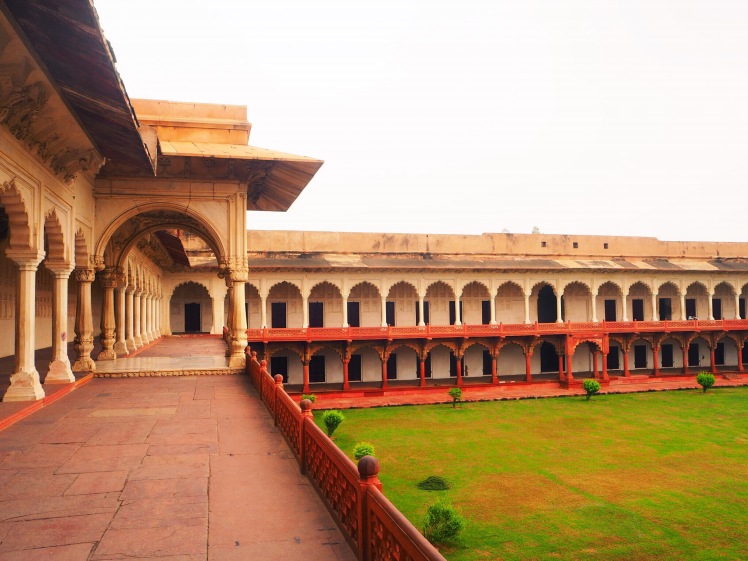Mumbai
Mumbai is a huge city. One of the world’s largest by pretty much any measure. It’s also not very approachable, and requires a complete reworking of western sensibilities when it comes to navigating and getting around. Taxis are dirt cheap and the best way to get around the city, but you’ll also get taken advantage of easily if you don’t know what is fair to pay. As is normal, agreeing to use the meter before getting in is good practice. As a rule of thumb, you’ll never pay much more than ₹500 (around $7.50) for a trip inside the city. Traffic is little more than a standstill for most of the morning and evening, and it’s common for a trip inside the city to take over an hour during these times. The local trains are a good way of getting around during rush hour, but due to their limited coverage you’ll probably need a taxi on one or both sides, and you’ll also need to get used to cramming on — or hanging out the door — with thousands of other people.

Although the cocktail scene and bar culture in Mumbai is very much still in its infancy, we wanted to see what it was all about. We visited most of the bars that people seemed to like online. Many of them were nothing special, but there were definitely a few standouts. Bombay Canteen was nice, with a focus on traditional Indian cooking methods and spices (both in the food and cocktails) with a modern twist. A brilliant white smile was all that was visible from the silhouette of our server bringing the G&T cocktail, garnished with a solitary curry leaf, to our table at Bombay Canteen. This drink, which was one of our favorites, somewhat confusingly isn’t actually a gin and tonic, but is modeled after one. The Harbour Bar serves some fantastic cocktails as well. It’s the oldest cocktail bar in India, dating back to the British colonial era, and some of its signature drinks were invented around that time as well. The Kipling Bar had some great cocktails too, albeit in a slightly fancier setting, with turban-clad waiters in Mandarin coats whisking drinks and dishes to-and-fro. All the fresh fruits and spices feature heavily in most of the cocktails we had, which definitely gives it a leg up on the competition, so it’s probably only a matter of time before it becomes a real destination for that sort of thing.

Contrary to popular belief, it’s quite easy to spend a huge amount of money in the bigger cities in India. It’s almost like two separate economies are operating in parallel, with a majority of the population existing in the lower economy, living on a fraction of a dollar per day. The upper economy, however, in which many of the nice restaurants and bars operate, requires a much bigger ante. The Harbour Bar, for example, charges a handy ₹1500 ($22) for many of their cocktails. Likewise, it’s easy to spend $80 on a higher end car and driver to get you from one side of the city to the other. High taxes, especially on alcohol, play a major part in some of these price tags as well. With that said, it’s also easy to exist solely in the lower economy, spending less than $10 per day as a tourist.

Bartering is a big part of the culture in India, and its essential especially as a foreigner. White skin is an immediate cue to charge extortionate prices for many shops. The initial quoted price is usually at least twice what it actually costs, so after a bit of bartering, the final price will be somewhere in the middle, which, as a foreigner, you can expect to pay. The markets all over the city operate this way, and there are tons of them. Some of the best known of which are Chor Bazaar, Zaveri Bazaar, and Crawford Market, all completely swarming with sweaty people and motorbikes squeezing through the narrow alleyways. Chor Bazaar, also known as Thieves’ Market (with a not-as-ominous-as-it-sounds backstory behind the name), has pretty much anything you could imagine ranging from car parts to antiques to bulk food products. Zaveri Bazaar specializes in jewelry, and lots of westerners come to invest on cut rate jewels for engagement rings and the like. Crawford Market is strictly a food market, with tons of fresh produce and sweets. There are countless stray dogs and somewhat (?) domesticated goats roaming the streets of these markets, too. While navigating through the throng on one of the narrower market streets we were witness to the awful sight of a dog getting its leg run over by a car. Nobody seemed to pay too much attention, but there was some light scolding of the driver, so it (unsurprisingly) seems like this is a fairly common occurrence. Stray dogs limping on three legs is not uncommon either, so hopefully that’s the worst that happened to this little guy.

In spite of the above caveats, Mumbai is actually a very safe and honest city. The people there are mostly helpful and polite. Having said that, however, our foreign-looking disposition attracted quite a lot of attention. There were constant requests for selfies (which a fellow traveler actually started charging for, which is either brilliant or totally immoral), and if communication wasn’t possible, ominous stares from across the room or street were commonplace. Comments about our tattoos were overwhelming as well, people would say things like “amazing tattoos!” or “I love your tattoos!” after only barely noticing that there was some ink on the skin. We concluded that they like the idea of tattoos more than they actually appreciate any specific tattoo.
After an all-too-long visit in Mumbai, and having finally worked my last day, we were free to head north. We booked an overnight journey to Agra on the Hazrat Nizamuddin AC Express. The ticketing system used by the Indian Railways is arcane and difficult to understand, but as we continued checking on our booking over the days, it progressed from waitlisted (which means no ticket, basically), to RAC (which means you can board the train, but don’t have a reserved sleeper bunk), to Confirmed (which means good to go). In India, pretty much everything needs to be printed to mean anything. Without a printed ticket you can’t even enter most airports, for example, even though you’re heading straight to the ticketing counter to check in. We realized that we had forgotten to print our train tickets on the way to the station, but our friendly cabbie, who turned out to be something of a celebrity among Mumbai taxi drivers, took us to a print shop and explained the situation to them. After 15 minutes of various different techniques for printing our tickets, we finally had paper-in-hand, at no charge to boot. The print shop woman gave them to us for free and wished us well on our journey. We had our compartment to ourselves on the train for the first few hours out of the city, but were joined by a retired telecom engineer and his aging mother heading back to Delhi shortly after. The train trip was surprisingly pleasant, with all the basic necessities like food and water being hawked by mobile vendors at most stops. The train would stop, the vendors would hop on and walk down one or two cars yelling things from the self-explanatory chaiwala chai coffee! to the not-so-readily-understood veg cutlet bread omelet!, and as the train started up again, the vendors would jump back onto the platform. The food we ordered for dinner from the pantry car wasn’t anything to rave about, but it got the job done and it was pretty cheap.

Agra
We arrived in Agra a few hours late the following morning, which is to be expected on Indian trains, and were greeted by monkeys (which were the first I’ve ever seen outside of a zoo) hooing and hawing at us, hanging from the piping in the ceiling of the train station.
Agra is known for a few pieces of historical architecture, most notably the Taj Mahal. The city is very touristy, not surprisingly, and the locals have learned to take advantage of that to the fullest. Most of the vendors are charismatic and hustling, trying to get the most money out of any purchase. We, like most tourists, only spent one day in Agra, and packed all the sightseeing into a few hours in the afternoon.


The common sights on the circuit are Agra Fort, the Tomb of I’timād-ud-Daulah (or more colloquially Baby Taj, due to its resemblance of the Taj Mahal), and the Taj Mahal. All of them are really quite stunning, the architecture is amazing, and the sheer magnitude of the projects is pretty incredible too. We visited the Taj Mahal in the late afternoon and were caught in a torrential rain storm while we were there. It was actually pretty fun, aside from being totally soaked, and afforded some fairly non-standard views of the structure. After trading stories with some other travelers, it seems like Indians are really fond of selfies with white people. Both Oona and I are constantly approached, especially at places like the Taj Mahal, and asked for selfies. Apparently they post them to Facebook and brag about how they have white friends or some such.



Delhi
Unfortunately we’re now stuck in Delhi until next week. Our original plan was to travel to China over land via Nepal and Tibet, but that proved to be a pretty demanding route after a bit of research. First of all, the land border between Nepal and Tibet is still not open, and there’s no official date yet, only rumblings of “next month” to placate any fears. In addition, traveling independently in Tibet is forbidden, so you need to be part of a tour group, and the prices for such things are getting higher and higher each year. Rather than spending a $1500 a week on a tour, we opted to fly straight from Delhi to Kunming, in the Yunnan Province of China.
We hightailed it out of Agra at 5am and went straight to the Chinese Visa Office on the south side of Delhi with the intent to express service our visas, pick them up the next day, and fly out on Sunday. Unfortunately, and unbeknownst to us or the Internet at large, Finnish citizens are unable to use the express service at this location, so the earliest Oona could get her visa was by Tuesday. The catch-22 of the situation is that without tickets booked into and out of China, they won’t give you a visa, and without a visa you obviously can’t enter China. So we had already booked our (purportedly flexible) tickets for Sunday, and were forced to cancel them, only getting a portion of the money back. At the office, we were also told about a handful of supporting documents we weren’t aware of needing, including such comprehensive things as a day-to-day itinerary and bank statements proving that one has the financial wherewithal to support oneself on the trip. After hours of printing, tearing up, reprinting, and re-filling out, we finally got those things together and submitted our applications on Friday. We’re told they’ll be ready by Wednesday. Not wanting to spend a minute longer than we need to in another congested, hot, muggy, Indian megacity, we booked another set of tickets to Kunming for the afternoon of the day we’re supposed to get our visas. So, fingers crossed that everything works out and we can head to the cool mountains and valleys of the Yunnan province post-haste.

Our desire to get out of here shortchanges Delhi, in a way. We never intended to even come here, so we aren’t in much of a mood to get out and explore, especially in 40° C/104° F weather. What we’ve noticed so far though, is that it’s a lot more “western” than Mumbai, and seems sort of uncharacteristic of an Indian city, although that would depend on one’s perspective. The strangling traffic, sea of honking horns, and snarls of busy people in Mumbai are the mostly empty roads, calm neighborhoods, and well-maintened public transport and parks of Delhi. We were warned of the untrustworthy people of the north by Mumbaikars time and time again, but the people here seem mostly honest, if not a bit bored. It could be chalked up to a good-natured rivalry between a few of the economic powerhouses of India. As pleasantly surprised as we are with Delhi, we still eagerly await our visas, so stay tuned for upcoming blog posts on our journey through China.

2 thoughts on “India”